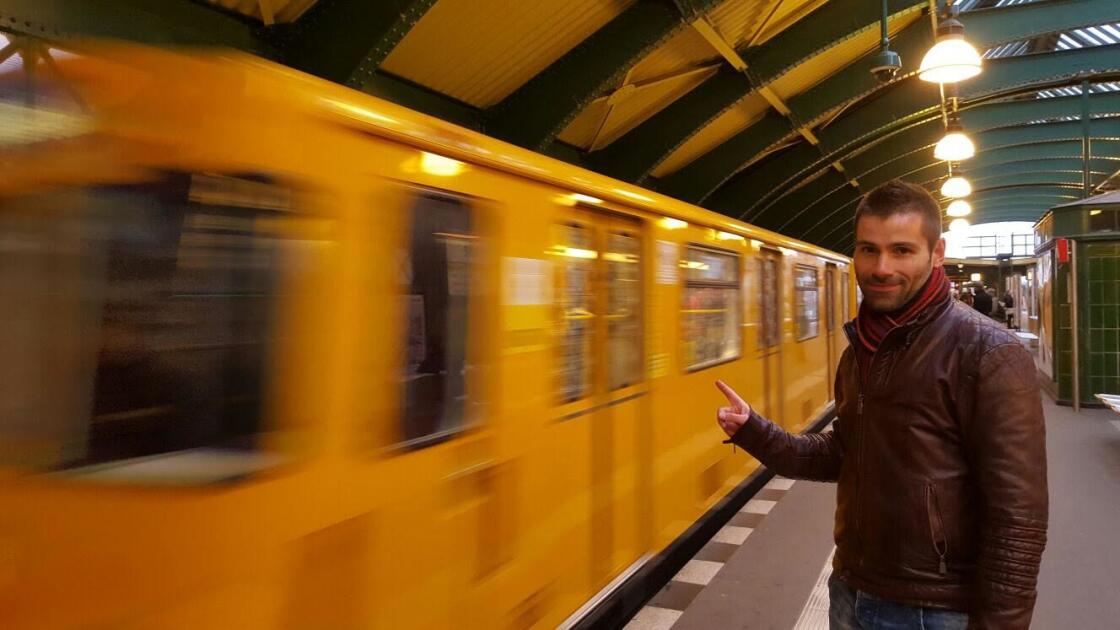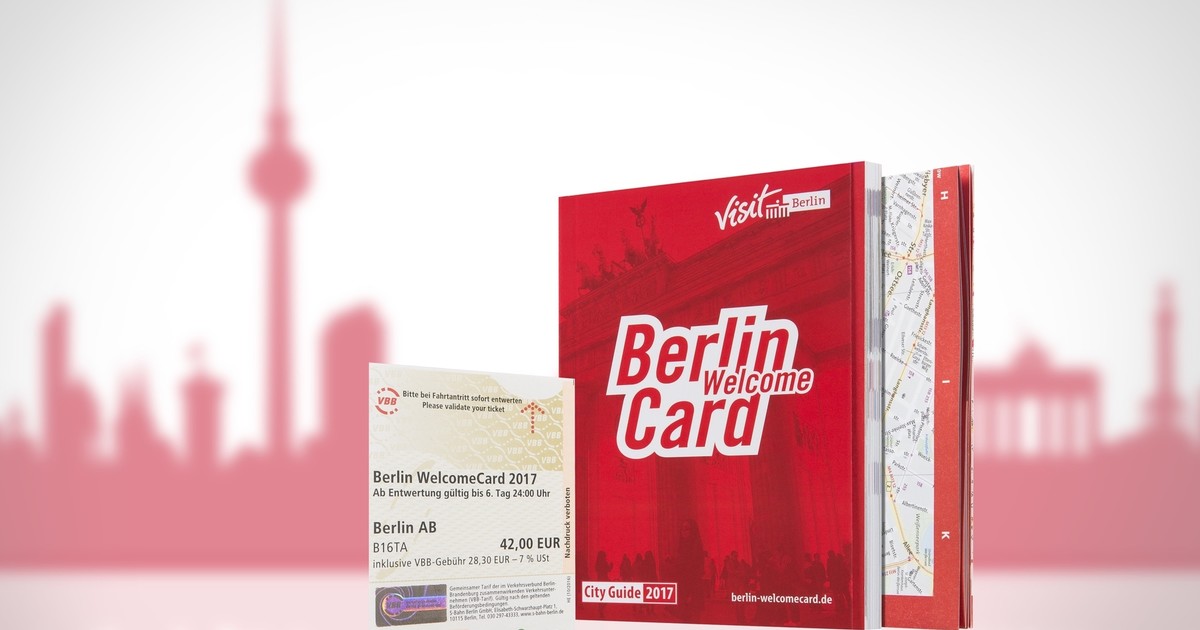TERMS OF USE: There is a chance that some of the content on this page has changed since it was last updated. By reading this article, you consent to our Terms of Use and Disclaimer. Happy Travels!
DISCLOSURE: Some of our posts may contain affiliate links which we may receive a commission if you choose to book something through one of our links.
These are the different ways to reach Berlin's city center from the new Brandenburg airport including bus, express train, taxi, and more.
Berlin Brandenburg Willy Brandt Airport is the new international airport for Berlin after Tegel and Schönefeld have closed down – although Schönefeld has technically become the Terminal 5 section of the new airport. Berlin Brandenburg airport (or BER) is located in the southeastern end of Berlin, about 18km from the city centre.
There are many ways to reach the city centre from Berlin airport. Following our many trips to Berlin, we show you the best ways to get from the new Berlin airport to Berlin's city centre.
Please note: currently Terminal 5 is closed due to low traffic following the worldwide pandemic, so all flights are only arriving or departing from Terminal 1 and Terminal 2.
The quickest way to reach Berlin city centre…
…is with the airport express train which runs every 30 minutes from 4am to 11pm. Make sure you pre-order your Berlin Transport Card before you arrive to avoid queues at the airport. It includes unlimited travel in Berlin and a return journey from / to Berlin airport. Remember to purchase it for zones AB and C which also includes Berlin-Berlin Brandenburg airport station.
Berlin Transport Card
First of all, if you're planning to spend a few days in Berlin and use the public transport system (Metro, bus and train), you should know that Berlin's ticketing system can be confusing especially if you've never visited Berlin before and you do not speak German. Also the ticketing machines during peak hours can get very crowded and you end up getting stuck in long queues.
To overcome these problems and help tourists in Berlin, the tourism office has very cleverly created the Berlin Welcome card, which is a GODSEND when you're a newbie to Berlin.
We strongly advise to purchase your Berlin Welcome card in advance. It will not only save you money, but you will also avoid any queues at ticket machines (a blessing at rush hour when queues are huge). The Berlin Welcome card gives you unlimited travel for a 48 hours, 72 hours, 4 day, 5 day or 6 day period. Make sure you buy the card for ZONE ABC which includes Berlin Brandenburg Airport. On top of that, the Berlin Welcome card gives you up to 50% off from many attractions in Berlin. Find out more about the Berlin WelcomeCard here.

Advice for LGBTQ travellers to Berlin
Berlin is uber gay and we love it! It's one of our favourite gay cities in Europe with a large queer community and lots of LGBTQ hangouts, particularly in Schöneberg, Kreuzberg and Neukölln. For more, check out our detailed gay travel guide to Berlin and find out about gay life in Germany in our interview with cutie Marcel from Berlin.
Airport Express trains
The airport express trains (FEX, RE7 and RB14) are the fastest way to reach Berlin city centre from the Flughafen BER station, which is directly below Terminal 1 in level U2.
The trains run every 30 minutes between around 4am to 11pm and cost €3.30 each way. The metro tickets in Berlin are valid for a 2 hour period. On weekends there's a night train at 1:44am.
The FEX train only stops at Berlin-Ostkreuz, Berlin-Gesundbrunnen and Hauptbahnhof but there are two each hour. The RB14 and RE7 trains are technically regional ones, but they are also referred to as express trains since they travel so fast.
The RB14 and RE7 Airport Express trains both run hourly from Berlin Brandenburg Airport (BER) to Ostkreuz, Ostbanhof, Alexanderplatz, Friedrichstraße, Hauptbahnhof, Zoologischer Garten, Charlottenburg and Spandau.
If you're going to be using the metro in Berlin a lot, which is usually the case, we recommend buying a Berlin WelcomeCard.
TIP: remember to purchase it for zones AB and C. Normally you need only the AB ticket for most of the main tourist attractions in Berlin, but for the Flughafen Berlin station, you need zone C added as well.
Berlin Metro
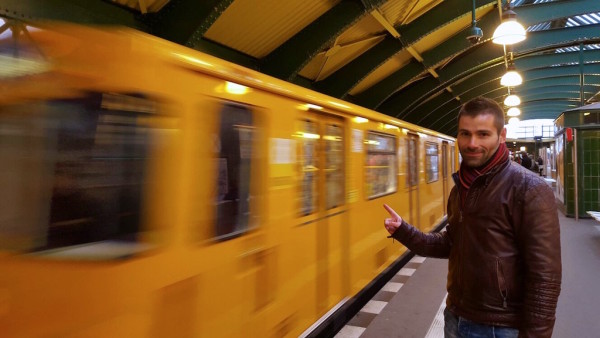
The metro in Berlin is referred to as the Bahn. The main ones are the U-Bahn which goes underground, and the S-Bahn which is suburban.
The S-Bahn runs all the way to the airport. It's not as convenient as the airport express (or as fast) and costs the same. However, the advantage is that both the S-Bahn and U-Bahn run non-stop during weekends, so if your plane lands late at night on the weekend, this is a good option to reach the city centre.
If your flight is arriving at Berlin Terminal 5 then you will need to catch an S-Bahn train into the city or to Terminals 1 & 2 to switch to the airport express. Terminal 5 is now what used to be Schonefeld Airport so it's a bit further out from terminals 1 & 2.
S-Bahn train lines are named S and a number (e.g. S1). The S9 and S45 lines are ideal if you're looking to reach West or East Berlin from Berlin airport. S9 leaves from Terminal 5 as well as Terminal 1-2 and goes all the way to Alexanderplatz. However, to go to the city centre stops such as Potsdamer Platz or Stadtmitte, you will need to change at Berlin Hauptbahnhof (Berlin Central Station) to the U-Bahn. The S45 line only travels between Terminal 1&2 and Südkreuz, where you will need to change lines.
On weekdays, S-Bahn trains start running around 4.30 a.m. and stop at 1.30 a.m. Depending on the time of day the trains run every 5, 10 or 20 minutes. On weekends, S-Bahn trains run 24 hours, at night every 30 minutes.
The Berlin U-Bahn is open from 4am to 1am on weekdays, and also runs 24 hours on the weekends. During peak hours, U-Bahn trains run every 3 to 5 minutes. The rest of the day, they run every 10 minutes and at night every 15 minutes.
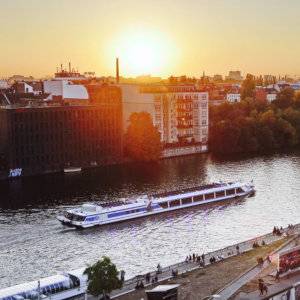
Go on a romantic dinner cruise
Take your loved one out for a very romantic experience on a river dinner cruise during your stay in Berlin! You'll see all the best sights of the city while dining on a yummy three-course meal.
Public buses
Buses run from Berlin airport to the area of downtown Berlin. They cost the same as catching the train/metro but usually take a little bit longer. The night bus can be a godsend if you arrive too late to catch a train.
Express Bus
The Airport Shuttle BER1 travels between Steglitz Rathaus and Berlin Airport Terminal 1-2 every hour. It takes about 45 minutes to get to Steglitz Rathaus from the airport and it is a bit pricey at €11.30. Once at Steglitz Rathaus, you will be able to switch to the S-Bahn or walk a few steps to get to the U-Bahn and travel the rest of the way into central Berlin.
Bus X71
X71 is a new service that travels between the new Berlin Brandenburg Airport (from both Terminal 1-2 and Terminal 5) to Rudow, Johannisthaler Chaussee, and Alt Mariendorf. It runs between 3:59 am and 10:11 pm seven days a week, departing every 20 minutes. From any of those stops, you can then transfer to the U-Bahn to reach the city center.
Bus X7
This bus travels between both terminals to Rudow, where you can switch to a U-Bahn train to get further into the city. It departs every 5 minutes.
Buses from Terminal 5
Bus lines 163, 164 and 171 all travel from (or to) Terminal 5 only and depart every 20 minutes. 163 stops at Grünau, Adlershof and S Schöneweide. 164 stops at Adlershof and Köpenick. 171 stops at Rudow, Grenzallee, Neukölln, Sonnenallee and Hermannplatz. All of these stops then link up with either the S or U-Bahn lines for you to continue into Berlin.
Night Bus N60
The N60 night bus starts operating at 00.50am and ends at 4.20am, with about six journeys on weekdays and more on the weekend. It takes about an hour to get you as far as Alexanderplatz.
Uber or taxi?
If the night bus or public train does not appeal to you, you can use the public taxi. A metered taxi from Berlin Brandenburg airport to Alexanderplatz or Nollenderplatz (around 23km) will cost you around €45-50€ and you will find plenty of public taxis just outside the airport.
If you're more confortable using an app, we recommend Uber. In Berlin, Uber is used as a taxi hailing app so when you get a taxi on Uber you end up riding one of the public metered taxis. The difference is that payment is automatically managed in the app and you get the convenience to hail your taxi directly from the app which is a godsend when you do not speak German.
Uber will also get you a fare estimate and allows you to choose your exact pickup and drop off location. Once the app has found your driver you never wait more than 3-5 minutes.
If you have not signed up to Uber yet, download the app now, and type our invitation code sebastienc221ue which will get you your first ride for free.
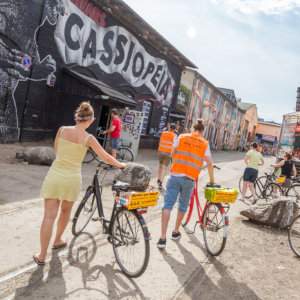
Explore the alternative side of Berlin by bike
Skip the regular tourist attractions in favour of discovering Berlin's more alternative neighbourhoods on this fun bike tour. You'll get to explore the areas of Kreuzberg, Görlitzer Park and the East Side Gallery with a local guide.
Private transfer
If none of the options above suit you, you can always book a private transfer service from the airport to the city center (or vice versa). You will have the peace of mind of knowing that someone will wait for you at the airport and look after you until you reach your hotel. In the past, mainly for night flights, we booked our airport transfer with Welcome Pickups and have not been disappointed.
They are reliable, on time and you get a big car all to yourself with an English speaking local driver who points out the most important points of the city, and will also help you ordering skip the line tickets, sim cards, etc… for the same price as a taxi from the line.
Getting around Berlin
While it's delightful to walk around and explore the many different neighbourhoods of Berlin, the city is huge so you will most likely need to use public transport to get between the different areas. Berlin's public transport system includes the U-Bahn (subway/underground), S-Bahn (light rail), buses and trams.
The city is divided into three different fare zones: A, B and C. The A zone covers the area within the circle line of the Ringbahn (the inner city), while the B zone covers the area between the inner city and city limits. The C zone is the area outside of Berlin proper, which includes Potsdam and the Berlin Brandenburg Airport.
Tickets can be bought at metro stations, on trams, from bus drivers and at BVG sales offices, but often only with cash or the correct change. We recommend you pre-purchase the Berlin Welcome Card as it gives you unlimited travel in the zones you choose for the whole duration of your stay. This will save you a lot of time and avoid unnecessary stress trying to figure out the German ticketing system!
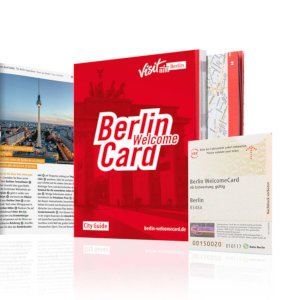
Save time and money on transport in Berlin
Public transport in Berlin can be confusing, especially if you don't speak the language. With the Berlin Welcome Card, you'll have access to all modes of transport within the city. Make sure you purchase your card for zones AB and C so that your return trip to Berlin Brandenburg Airport is included!
Where to stay in Berlin
As we've mentioned, Berlin is large, which means you have a lot of different choices for accommodation based on the area you'd like to stay in and your budget. These are our favourite areas to stay in Berlin:
- Mitte: if it's your first time in Berlin, Mitte is the perfect location to stay as this is where the majority of the ‘must-see' tourist locations can be found. Because of its central location and popularity, hotels in Mitte can be quite expensive, so make sure you book your accommodation well ahead of time. Check for some of the top hotels to stay in Mitte.
- Schöneberg: This is the place to stay if you want to be close to the main Berlin gay scene! Schöneberg is the historical heart of the city's LGBTQ community and has been since the 1920s when it became the first ever gay village in the world. Here is where the majority of Berlin's gay bars, clubs and other venues are located. Have a look at hotels in Schöneberg here.
- Kreuzberg: Next to the main gay neighbourhood of Schöneberg is Kreuzberg, which is known as the best part of Berlin for nightlife and is also home to a more alternative gay nightlife. Also known as Xberg, Kreuzberg is full of clubs, hipster restaurants and lots of cool street art. It's close to the centre of Berlin, so it is a good option if you want to be near the tourist sights as well as the best parties. Check out the top hotels to stay in Kreuzberg.
- Neukölln: If you'd prefer a quieter location to sleep while in Berlin, then Neukölln is a good choice. You'll still be able to get into the city centre by public transport, but will be staying in a more budget-friendly area with lots of funky art galleries, bars and restaurants. Find the best hotels in Neukölln now.
- Friedrichshain: Located in East Berlin, Friedrichshain is now an alternative neighbourhood with a fantastic arts scene. There's a lot of events at night and while it's still a relatively up-and-coming area it's also a good choice if you're travelling on a budget. Check out the top hotels to stay in Friedrichshain.
- Prenzlauer Berg: Often called the ‘coolest' neighbourhood in Berlin, Prenzlauer Berg has a young and hip vibe, with lots of old breweries or factories that have been transformed into very unique hotels. There's also a lot of art galleries, designer shops, cafes and restaurants to enjoy. Have a look at the top hotels to stay in Prenzlauer Berg.
Things to do in Berlin
Once you've made your way from the airport to your accommodation, it's time to have fun and explore Berlin. These are some of our favourite things to do in Berlin, a mix of the must-see tourist spots and a few more alternative ideas to inspire you:
See Checkpoint Charlie and the Berlin Wall
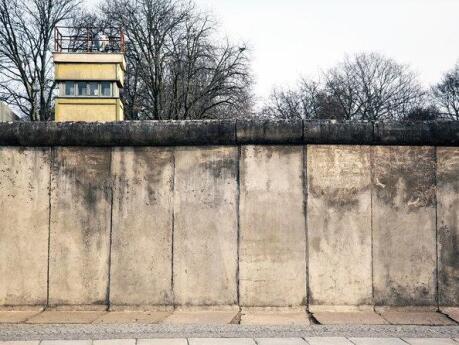
Checkpoint Charlie is one of the most famous spots in Berlin and one we definitely recommend visiting, but while you're at why not also learn more about the history of the Berlin Wall? We found this walking tour about the Cold War to be a fascinating way to learn about the history of the period when the Berlin Wall was built, as well as giving us the chance to visit historic sites such as where the Wall fell in 1989.
Explore Museum Island
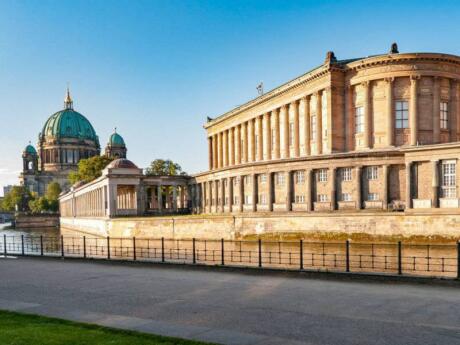
Lovers of art, history and culture need to check out the famous Museum Island of Berlin. On the northern half of this island located on the Spree River is six different and fascinating museums, which display exhibits from around the world. You can even get a special Berlin WelcomeCard which includes entrance to all the museums for a bit extra! If you don't have time to see them all then we recommend the Pergamon Museum where you can see the Pergamon Altar and Ishtar Gate from Babylon, or the Neues Museum for the famous bust of Nefertiti.
Visit Potsdam and Sanssouci Palace

Just a bit outside of Berlin is the UNESCO World Heritage-listed city of Potsdam. This is a fascinating spot for a day trip, especially if you visit the Sanssouci Palace, one-time summer home of Frederick the Great, former King of Prussia. Rivalling Paris' Versailles for its incredible gardens and interiors, Sanssouci Palace is a must-visit in our books! While you're in Potsdam don't miss out on exploring the many other palaces as well, like the Orangery Palace, New Palace and Charlottenhof Palace.
See Berlin from the Sky
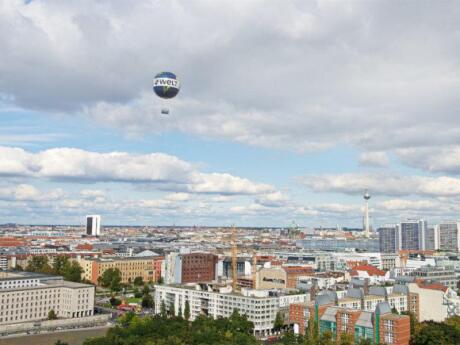
For a pretty unforgettable experience, you can actually see the city of Berlin from the sky by going for a ride on the World Balloon hot air balloon. This is one of the largest hot air balloons in the world, which takes you 150-metres above the city for some really epic views. You'll be floating over the most famous sights, like Checkpoint Charlie and the Brandenburg Gate. Don't worry about feeling unsafe up there either as the balloon is actually tethered to the ground by a steel cable. For a touch of extra romance, book your ticket for the evening ride so you can watch the sunset over the Berlin skyline.
Go Inside the Reichstag Dome
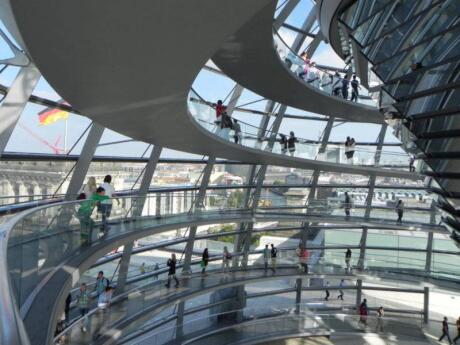
If you want to enjoy some of the best views of Berlin without actually going up into the air, you can do so by visiting the glass dome on top of the Reichstag Building. The historic building used to be the headquarters of the Imperial Government in Germany. It was damaged during WWII, fell into disuse and was restored in the 1990s. The glass dome on top offers 360-degree views over the city, so it's the ideal spot to see places like the Brandenburg Gate, Potsdamer Platz and the Berlin Cathedral. You can also visit in the evening for the extra-magical experience of seeing the city's twinkling lights.
Try some Typical Berliner food!

A delicious way to explore some of Berlin's most vibrant neighbourhoods is via a food tour, something we always love doing when visiting a new city. This Berlin food tour is an excellent way to learn about the local culture through dishes that have come from all over the world to make up the Berlin foodie scene. You'll get to sample delicacies like Pilsner beers, currywurst, fusion Austrian Dumplings and find out where the best street food spots are located with a passionate local guide. Pro-tip: do this tour at the beginning of your time in Berlin as you'll be finding out all the best places to eat throughout your visit!
Learn about the Rise and Fall of Hitler
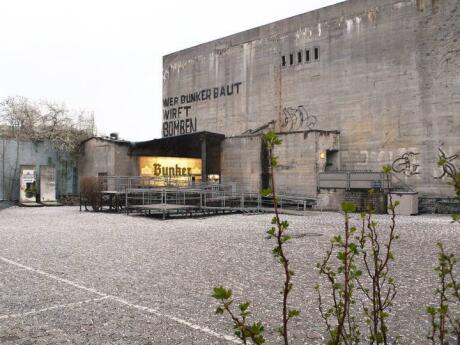
We think everyone who travels to Berlin should take some time to truly understand how and why Adolf Hitler was able to come to power during the period of Nazi rule. Visiting the Berlin Story Bunker is one of the best ways to learn about the period of National Socialism that brought about the Second World War. It's a full-scale replica of Hitler's bunker with exhibitions and informational details that aren't widely known. This is quite a sobering experience, but absolutely worthwhile to help us understand how such terrible things happened and how we can prevent them from ever happening again.
Explore the neighbourhood of Neukölln
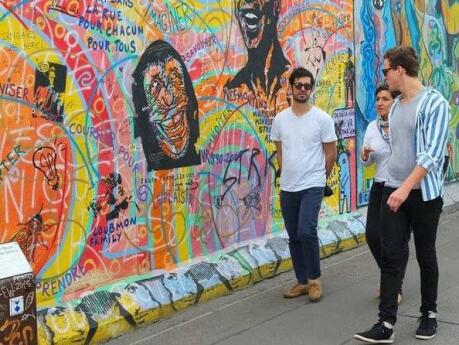
Since we're talking about getting to the Berlin city centre from Schoenefeld airport, it's worth mentioning the up-and-coming area of Neukölln, which is located between the airport and the Kreuzberg neighbourhood. This is a contemporary part of the city, perfect if you like to get off the beaten track to explore places with plenty of street art and markets where creative types live. If you join a local walking tour of Neukölln you'll find out all the best local spots for street art, markets, bakeries, cafes, bookstores, restaurants and bars. And hey, if you stay in this area then you won't have as far to travel to get back to the airport!
Have a Meal with a View in the TV Tower
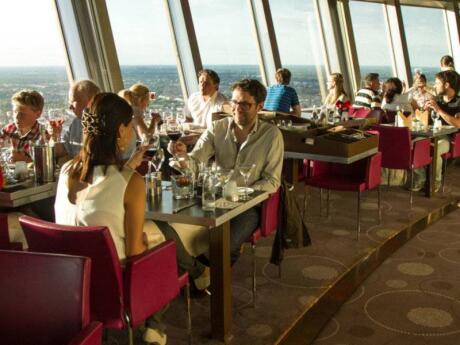
The Fernsehturm Berlin is a tower which houses several radio and television broadcasting stations, an observation deck including a bar, as well as a rotating restaurant. As the tallest structure in Germany (and third tallest in the EU), it's a very popular attraction for enjoying views over the city and a romantic meal in the Sphere Restaurant. We recommend that you book your TV Tower tickets online ahead of time, so you can skip the queues to ascend to the panorama floor and guarantee a window seat in the revolving restaurant. The menu offers a delectable array of German classical dishes and international favourites.
Experience the Breathtaking ARISE Grand Show!
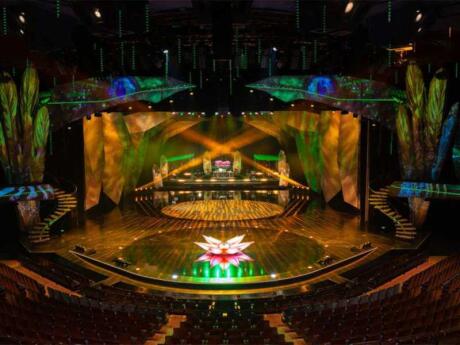
Ok, we've saved the best 'til last, because ARISE is one of our absolute favourite experiences in Berlin! Taking place at the Friedrichstadt-Palast, which is the biggest and most famous theatre in Berlin, ARISE is a top-class revue with over 100 performers. Prepare to be absolutely dazzled by acrobatics, music, dance and incredible costumes in, well, vivid colours! The show is a declaration of a love for life which will leave you feeling empowered, inspired and filled with child-like wonderment. We don't want to give it away, so just trust us, and go see it!
For more inspiration:
- If you're travelling on a budget, these are the most awesome gay hostels in Europe
- You might also like to read about these cheeky sex hotels in Berlin
- Or for something a little tamer, check out our favourite romantic things to do in Berlin
- And if you're heading east of Berlin you might be surprised by these gay friendly cities in East Europe
- Read why we think Germany ranks as one of the most gay friendly countries in the world
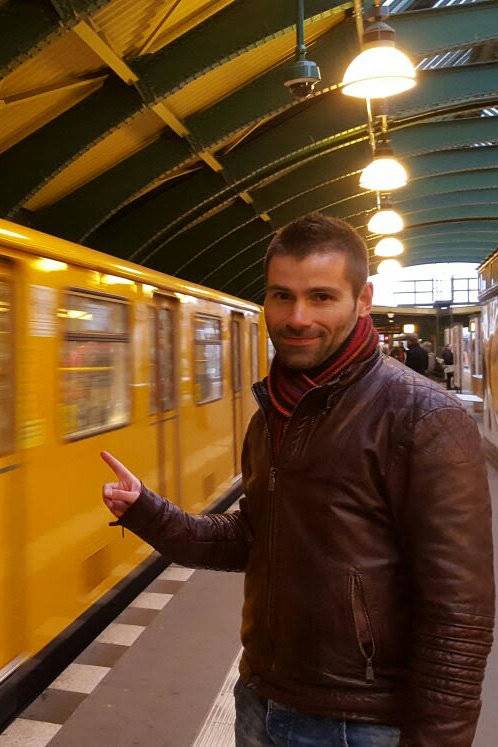
Happy travels are safe travels
We recommend you always take out a reputable travel insurance before your next vacation. What happens if you suffer from illness, injury, theft, or a cancellation? Many travelers forget about it and regret it when something happens. Better to pay a small price and have the peace of mind and not worry.

